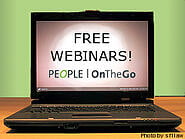Guest blog article written by Dalya Massachi, M.A., Published Writer, Founder of Writing for Community Success

What do you think of when you first hear the word “marketing”? A bunch of deceptive hyperbole with no substance? A sleazy game that shady characters play when they are trying to get you to buy something that you don’t actually need or want? At some point, most of us have even said something like, “Oh, that’s just a marketing ploy.”
As a representative of a community-oriented effort, you definitely do not want your voice to be associated with empty promises. Fortunately, marketing does not have to be that way. Your organization is not just about building a better mousetrap that serves the community. You also want people with rodent-control problems to be aware of you, easily access you, consider supporting you, and spread the word about your work.
People working in the public interest increasingly acknowledge that we too have to get out there and hustle to attract attention to ourselves. Terms such as “social marketing,” “cause-related marketing,” “green marketing,” and even the old standby “outreach” come to mind. After all, if no one knows about your good work, you simply are not going to get very far.
So when I say “marketing” in the public-interest context, I am talking about:
Sharing information and enthusiasm about your work with interested people who may want to exchange their involvement or support for the value you add to them and their community.
That exchange is important. It is essentially an agreement, sometimes even a contract, between you and your reader. Remember: We are talking about dialogue that helps everyone win. That is what writing to make a difference is all about.
When you write on behalf of a community-benefit organization, you have to convey its work clearly, concisely, and persuasively. Your readers may include investors, clients, the press, activists, volunteers, colleagues, allies, and other stakeholders. You want to educate, inspire, and activate them. And to do that you have to write strategically to reach each specific type of reader. That is, you have to copywrite (notice the “w” in there).
When copywriting, you also want to cultivate relationships with your readers over the short and long term. You want to encourage them to see your work as credible, successful, and vital—a solid investment of their time and/or money. You are looking to strike a responsive chord, so that your relationship can grow from there.
To communicate to the right people, in a way that builds solid relationships, you have to treat everything you write as a potential marketing tool. The specific language you use will vary, of course, according to the type of document and the intended reader. (For example, you would not write a project or funding proposal in the style you use to write a brochure, flyer, or press release.) The tips I share in this book offer a wide range of concepts to consider, no matter what your writing task.
Additional Resources
Writing to Make a Difference (2 x 90-minute webinars, 8/12, 8/19 11:30 am Pacific Time)
Writing to Make a Difference (Book on Amazon.com)








